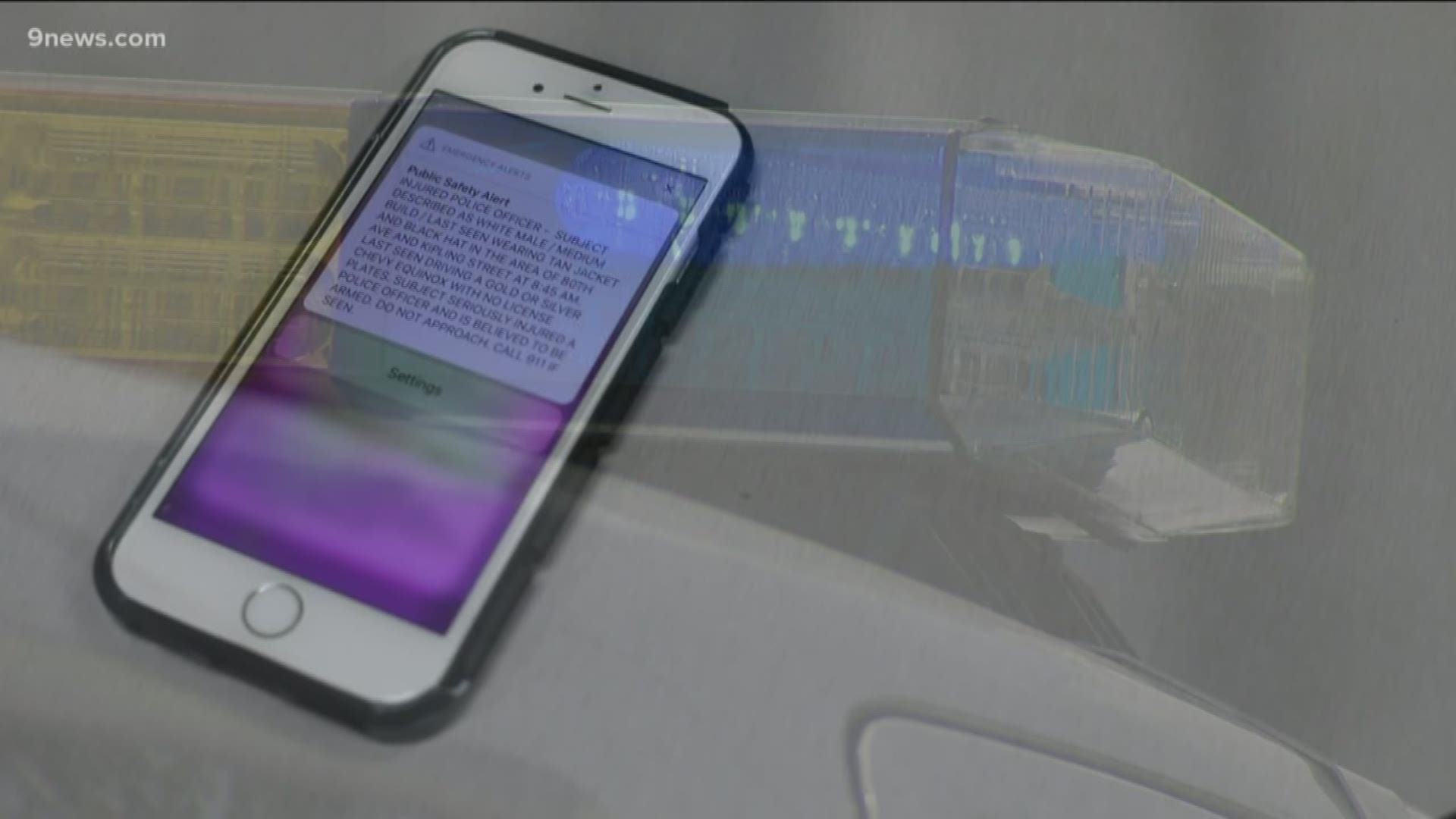ARVADA, Colo. — For just the second time in Colorado, a BLUE Alert was issued Wednesday afternoon in an effort to help find the suspect accused of shooting and wounding an off-duty Denver detective following an armed robbery at an Arvada gas station.
"If an officer is involved in an incident, and it’s a critical nature – life-threatening situation – we can activate that system upon request by originating agency to disseminate that information not just locally but statewide as well," said Susan Medina with the Colorado Bureau of Information.
Florida was the first state to adopt the Blue Alert in 2008; since then 13 other states have adopted them. It was signed into law in Colorado in 2011 under House Bill 11-1036 with the goal to alert the public of the danger posed by a suspect who might have killed or seriously wounded a member of law enforcement.
A statewide Blue Alert was issued around 1 p.m. Wednesday to provide information about a suspect accused of shooting and wounding a Denver detective who confronted him following an armed robbery at an Arvada gas station earlier in the morning.
An off-duty DPD detective was shot at least twice when he confronted the suspect as he left the gas station, according to Arvada Police.
RELATED: Suspect in Arvada robbery had 2-year-old daughter in vehicle during shootout with detective
"It was a handful of hours that the alert was disseminated from the initial time of the incident – in those hours, there's a lot of work being done," Medina said. "It's investigators working [the] scene, conducting interviews."
It was also the first time the alert was sent to cellphones through the use of the Emergency Alert System (EAS).
"In 2018, the federal government worked to expand the use of the EAS to allow for Blue Alerts to be used in that format," Medina said. "We've been working with [the Department of Justice] since 2018, and that system just went live in the fall this year for us to access."
Blue Alerts work very similar to other alerts issued through CBI such as Amber Alerts, missing endangered alerts or Medina Alerts.
Medina noted that waiting to put out an alert might make sense to make sure all the information is accurate and is detailed enough to be helpful.
"We have one shot at getting this info out and out correctly," she said. "I always liken it to a pillow filled with goose feathers. Once that opens and rips and goes – we can't get them back. So we have to make sure the information there is accurate and able to provide detailed overview that will be helpful to the community."
SUGGESTED VIDEOS | Local stories from 9NEWS

